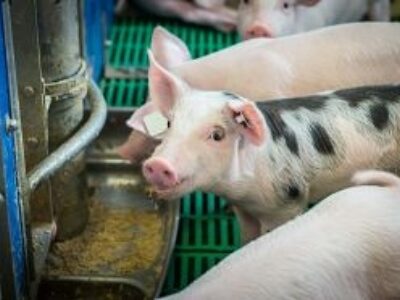



Is net energy the best predictor of pig performance?
It is important to precisely estimate the nutritional value of pig feedsBy Jean Noblet, INRAE (retired) and consultant, France. Presented at the Latin American Animal Nutrition Congress (CLANA), Mexico, October 2022.
The cost of feed is the most important cost in pig production (60-70%) and the energy component represents the greatest proportion (more than 80%) of that cost. Protein and minerals supply in feed are less expensive but crucial for performance of animals and levels of wastes and potential pollutions in the environment. Therefore, it is important to precisely estimate the nutritional value of feeds, either for least-cost formulation purposes (ingredients) or for adapting feed supply to requirements of animals (complete feeds). In addition, new and alternative feed ingredients, and new technologies (enzymes, for instance) are used and their impacts must be evaluated.
Not all gross energy (GE) of a feed is available for meeting the requirements of animals since variable proportions of GE are lost in excreta (feces and urine), as fermentation gases (methane, hydrogen) and as heat (or heat increment; HI).
The digestible energy (DE) content of a feed is equal to its GE content minus fecal energy losses, the latter ones being related to the levels of dietary fiber in the feed. The metabolizable (ME) content of a feed corresponds to the difference between the DE content and energy losses in urine and gases. Urinary energy is directly dependent on dietary nitrogen content. Methane production is very small and negligible in growing pigs, but it should be considered in adult pigs.
Energy digestibility (DE/GE) increases with body weight (BW) increases in pigs, with the highest difference between adult pigs (reproductive sows) and young growing pigs. The change is more accentuated for high dietary fiber feeds. The practical consequence of these variations is that DE or ME values should vary with BW or the physiological stage in pigs.
Technologies such as pelleting or extrusion or the supplementation with enzymes are used routinely in the preparation of feeds. They have usually a positive effect on nutrients and energy digestibility. Unfortunately, these effects are documented for only a few ingredients and insufficiently considered in feeding tables and in least-cost formulation.
Net energy
The net energy (NE) is calculated as ME minus HI. The efficiency of ME for NE (NE/ME ratio or k) varies with feed composition in connection with low k values for ME provided by protein and dietary fiber (60%) and higher values for starch (80%) and fat (90%). These differences between the major nutrients justifies the superiority of a NE system for evaluating the energy content of a feed and a better prediction of the animal’s performance.
From their studies conducted on a large set of diets and at different stages of production, Noblet et al. (1994) proposed NE prediction equations based on DE or ME content and chemical composition. The same authors validated the use of the same equation at any stage of pig production and for ingredients and compound feeds.
It should then be stated that measuring the NE of ingredients is rather useless and quite costly and complex; the simple application of these “1994” equations allow a direct estimate of NE values of both ingredients and diets in pigs from their DE or ME values that are easily accessible.

Feeding tables
Most recent feeding tables for pigs (NRC 2012; Brazilian tables 2017; INRAE-CIRAD-AFZ 2018-2022, CVB 2018; EvaPig 2021; FEDNA 2021) are also based on these “1994” NE prediction equations with most important countries and industries in the pig sector using the same concept and having moved their energy evaluation systems from DE or ME to NE.
This transition has been favored and justified by the higher variety of ingredients available for pig feeds with subsequent variable k values and, depending on the countries, the high constraints for low nitrogen content in pig feeds.
Feeding tables provide DE, ME and NE values for a high number of ingredients and are used routinely, the NE value being a better predictor of the “true” energy value of feeds and the best available predictor of pig performance.
The justification of NE is further accentuated if a large variety of (variable) ingredients is available. However, the ingredients used on a day-to-day basis may differ from those proposed in feeding tables. It is then important to adjust or correct their energy value for the actual composition.
The best adjustment in terms of accuracy, cost, rapidity, etc., come from the near infra-red spectroscopy (NIRS) methods that represent major progress when compared to wet chemistry or in vitro techniques. The further inclusion of the effects of technologies (pelleting, enzymes, etc.) on energy value in such NIRS techniques represents an additional challenge.
Overall, the biggest challenge for energy evaluation of pig feeds will remain the accuracy and reliability of their DE or ME values for calculating their NE value, keeping in mind that DE and ME values are dependent on several factors: Animal (BW), feed (dietary fiber, etc.) and technology (enzymes, heat, particle size, etc.). The NE being simply calculated from these DE or ME values.









